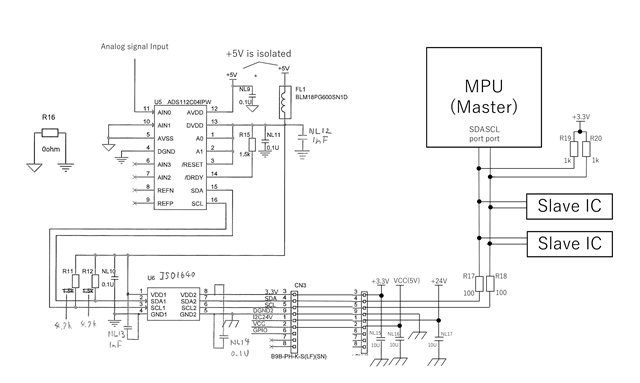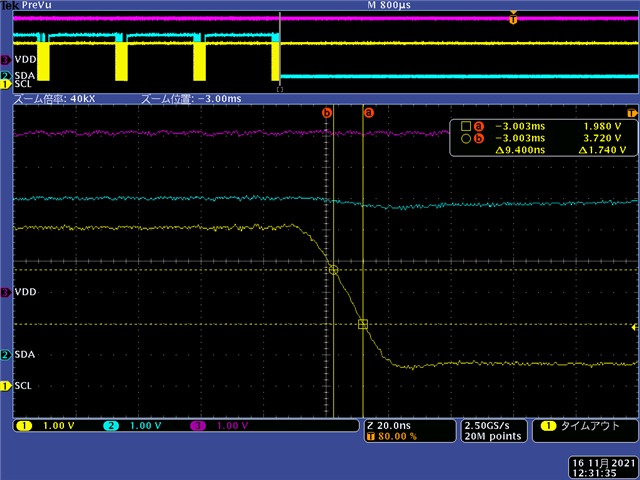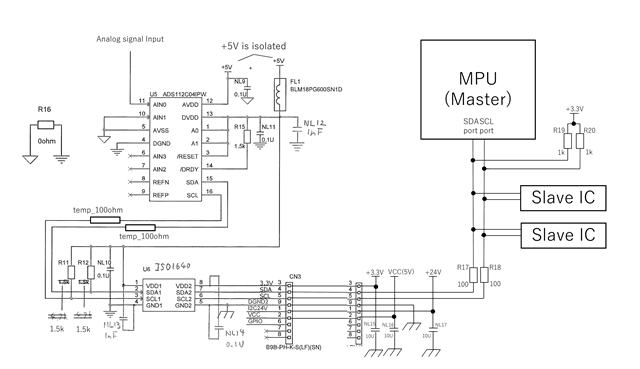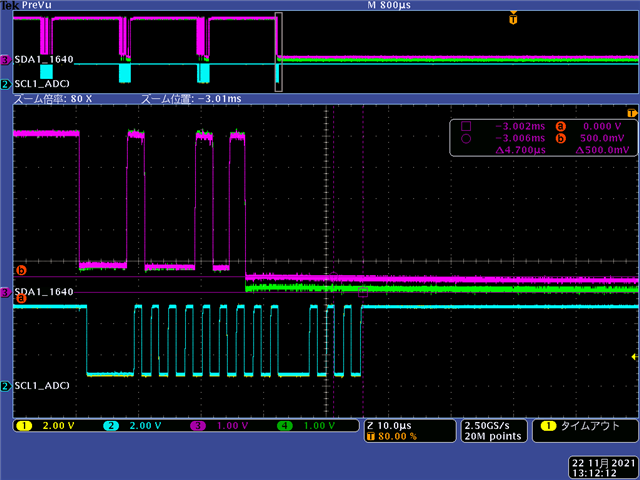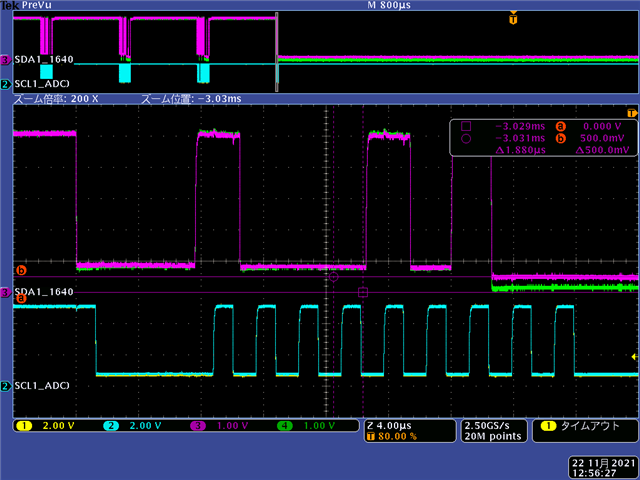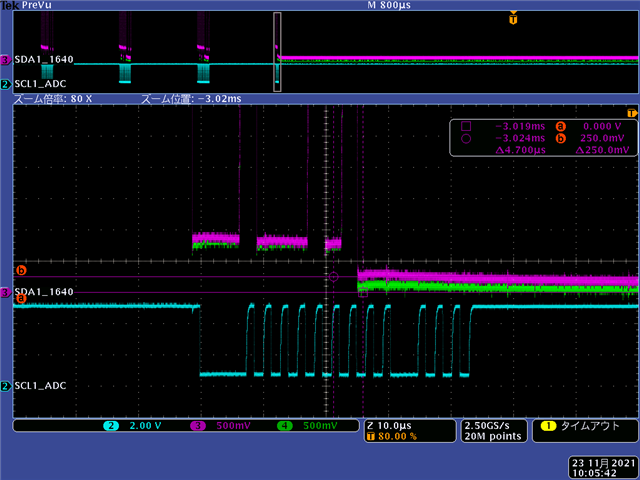Other Parts Discussed in Thread: ISO1640, ADS1119, ADS122C04EVM
Hi team,
ADS112C04 keeps the SDA signal Low.
Why does this happen?
Purple: DVDD
Yellow :SCL
Blue :SDA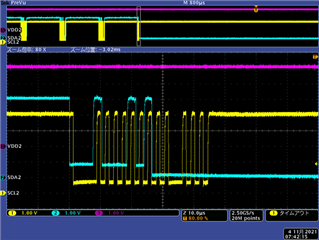
There is ISO1640 between MCU and ADS112C04 and GND of MCU side is rising.
Sincerely.
Kengo.


